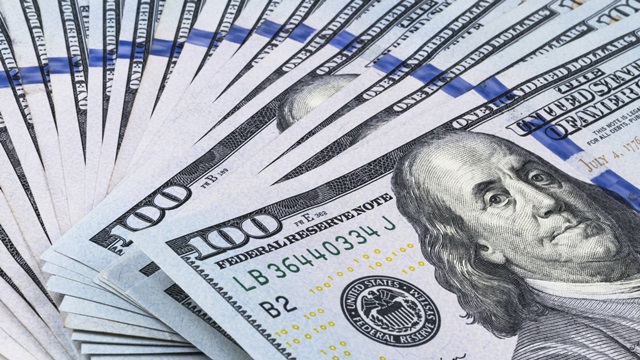The United States dollar weakened on Wednesday, losing ground against major global currencies as financial markets priced in a possible interest rate cut by the Federal Reserve. The decline comes amid rising trade tensions between Washington and Beijing, which have renewed concerns about the global economic outlook.
Foreign exchange data showed that the greenback fell to its lowest level in a week after a brief rally earlier. The pullback followed comments from Federal Reserve Chair Jerome Powell, who hinted that more monetary easing might be required to sustain economic growth amid increasing uncertainty in global trade.
“The Federal Reserve remains committed to supporting economic stability, and we are closely monitoring trade-related developments,” Powell said during a policy discussion earlier in the week. His remarks were interpreted by investors as a signal that the Fed could lower interest rates soon, leading to a selloff in the dollar.
Market analysts noted that the dollar traded lower against nearly all major currencies, reflecting a broad shift in investor sentiment toward safer assets. The dollar index — which measures the greenback’s value against a basket of six major currencies — moved within last week’s range of 98.70 to 99.55. After nearing 99.50 on Tuesday, it dropped to a four-day low of around 98.75 by Wednesday afternoon.
Traders attributed part of the dollar’s weakness to escalating trade tensions between the United States and China. The latest strain came after President Donald Trump announced plans to halt purchases of Chinese used cooking oil, a move seen as retaliation for Beijing’s recent reduction in imports of American soybeans.
“The heightened uncertainty surrounding US-China trade policy is weighing heavily on investor confidence and creating headwinds for the dollar,” said a New York-based foreign exchange analyst.
As tensions worsened, investors turned to traditional safe-haven assets such as gold. The precious metal surged above $4,218 per ounce — a new record high — after closing nearly $100 lower the previous week. Market watchers said the sharp increase in gold prices underscored the global flight to safety as traders looked to hedge against currency volatility and geopolitical risk.
Despite the ongoing trade dispute, China has avoided using its currency as a retaliatory tool. Instead, the People’s Bank of China set the yuan’s reference rate at its weakest level since November 2024, a decision viewed as an attempt to stabilise financial markets rather than escalate currency tensions.
“The Chinese government appears to be maintaining a cautious stance, aiming to project economic stability amid growing external pressure,” one Hong Kong-based market strategist observed.
Meanwhile, US Treasury bond yields remained subdued following Powell’s comments. Analysts said the combination of softer yields and expectations of another Fed rate cut continued to erode the dollar’s attractiveness among investors.
“Market participants are demanding higher risk premiums to hold dollars due to policy uncertainty and signs of slower economic momentum,” said an economist at JPMorgan. “Until the Fed provides more clarity on its next move, investors will likely remain cautious.”
Global markets have become increasingly volatile in recent weeks as investors balance geopolitical risks, slowing economic data, and expectations of monetary policy adjustments. The potential for a near-term Fed rate cut has added further complexity to the global financial landscape.
With both the United States and China facing economic headwinds, market participants expect currency fluctuations to persist in the short term. Analysts say the dollar could remain under pressure until clearer communication emerges from Washington and Beijing on trade negotiations and economic stimulus plans.
The latest developments also come at a time when investors are closely monitoring global inflation trends, central bank actions, and the outlook for commodity prices. While the dollar’s weakness may provide temporary relief for emerging market currencies, it also highlights broader uncertainty about the direction of global growth.
In the coming weeks, traders and analysts expect the dollar to remain volatile as markets react to policy signals from the Federal Reserve and updates on the US-China trade relationship. For now, the combination of monetary easing expectations, falling bond yields, and rising gold prices suggests that investors are preparing for a more cautious global investment environment.
